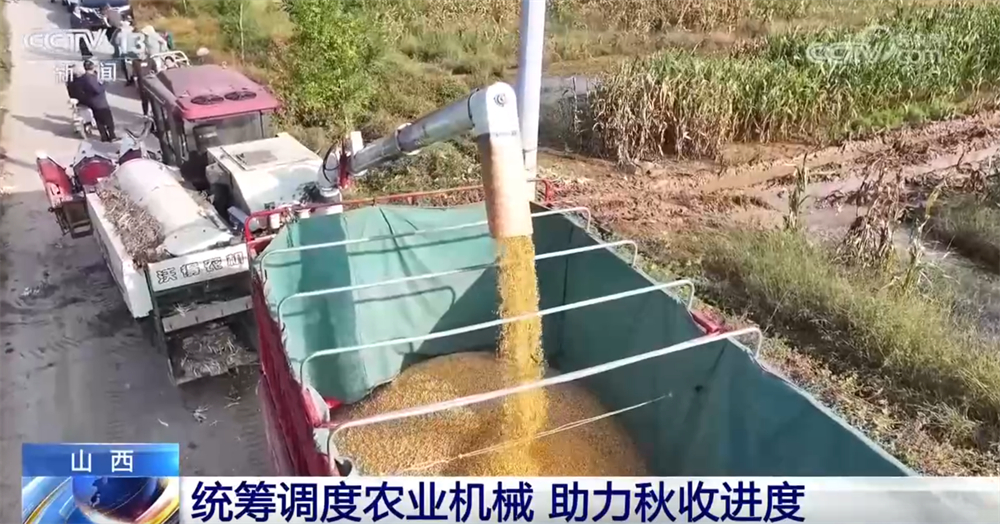Recent continuous rainfall in multiple regions has posed serious challenges to autumn grain harvesting. In the past couple of days, various areas in Shanxi have been taking advantage of clear weather, coordinating agricultural machinery resources, and making every effort to carry out emergency harvesting and drying operations.
In the cornfields of Kaizhang Town, Yongji City, rainfall has caused water accumulation in the fields, making it impossible for ordinary harvesters to enter. The agricultural machinery department promptly deployed multiple tracked harvesters to assist farmers with emergency harvesting operations. The flexible maneuverability and efficient grain harvesting capabilities of tracked harvesters allow them to better adapt to muddy fields, significantly improving harvesting efficiency.
Freshly harvested corn goes directly from the fields to processing facilities. At drying plants, drying equipment is operating at full capacity, with wet grain being fed into drying towers. The entire drying process is quick and efficient, providing comprehensive services from field harvesting to storage drying.
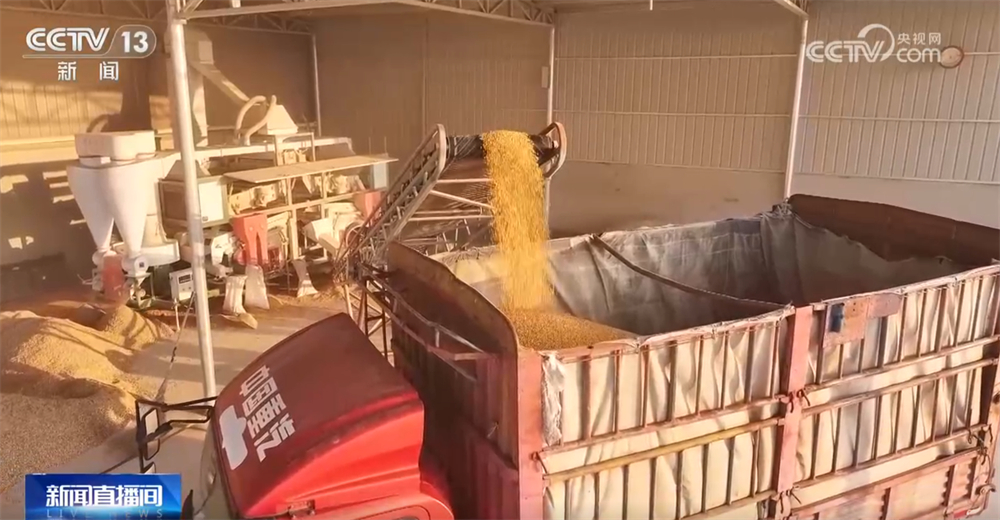
In the cornfields of Fengzhuang Village, Xihanling Township, Yungang District, Datong City, two harvesters brought in from Hebei Province are operating at full capacity. Due to previous continuous rainfall, the land is muddy and slippery. Transport vehicles loaded with golden corn require assistance from agricultural vehicles and excavators to successfully move the corn out of the fields and to various drying points.
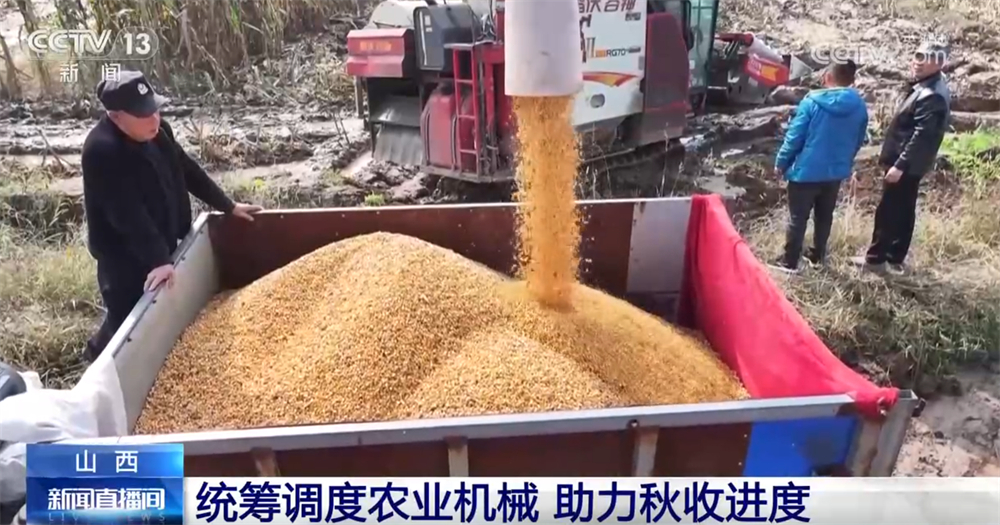
During breaks in the rainfall, in the fields of Hongshan Village, Songgu Township, Jiexiu City, tracked harvesters are advancing through muddy cornfields. Rows of corn stalks are neatly consumed by the machinery, followed by golden corn kernels pouring out like a waterfall. At the village drying center, drying towers are operating at full capacity. Golden corn flows through mechanized assembly lines, and after drying, it is directly transported via conveyor belts into standardized grain storage, achieving seamless integration of “harvesting, drying, and storing.”
Weinan, Shaanxi: Drainage operations underway to create favorable conditions for corn harvesting
Recent continuous rainfall in Weinan City, Shaanxi has caused water accumulation in some cornfields. Local water resources departments are taking various measures to actively drain water and create favorable conditions for harvesting work.
In Huayin City, Weinan, drainage work has begun in many cornfields. At the fields of one grower, an excavator has dug a drainage ditch, and accumulated water is being drained out.
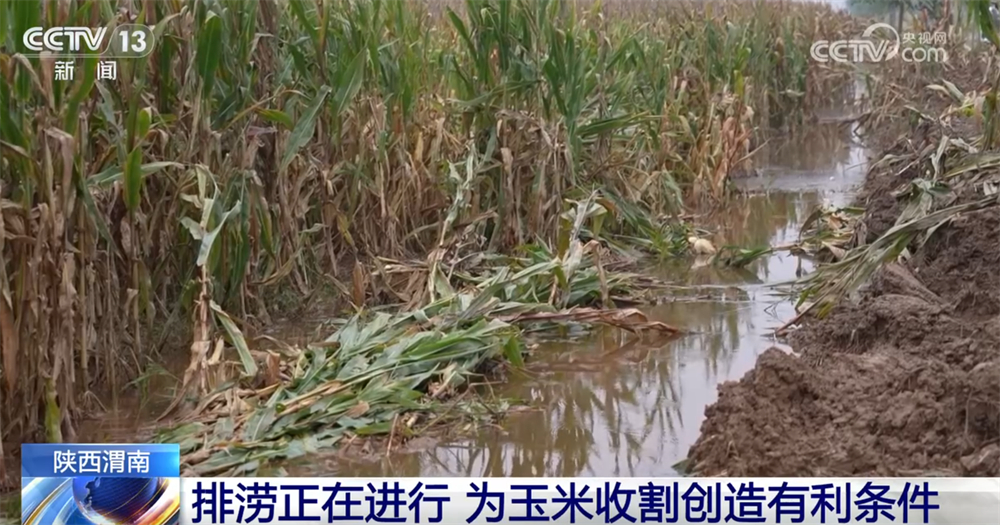
In villages with relatively low terrain in Huayin City, drainage work has been ongoing for several days. Water is first drained into ponds, then flows to main drainage channels, and finally discharged out.
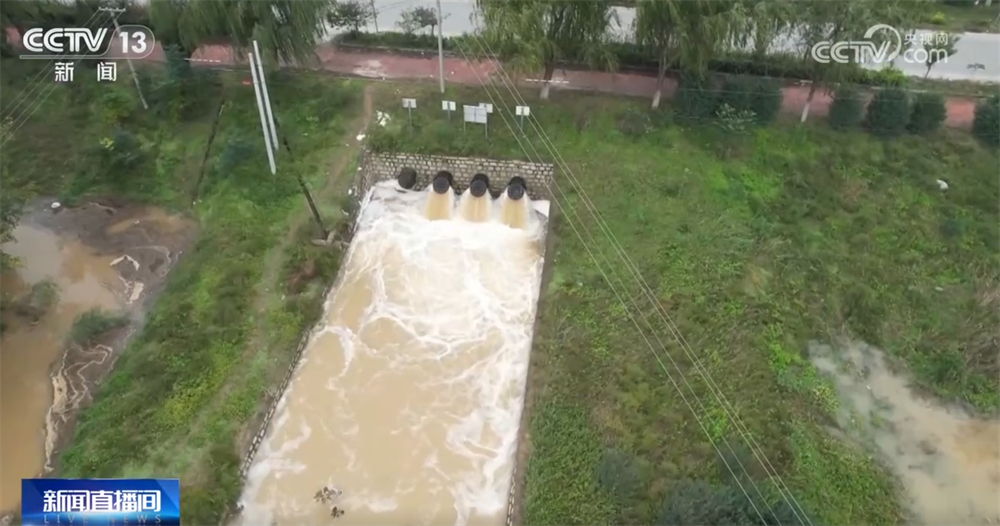
The main drainage channel mentioned is the Erhua Drainage Channel in Huayin City, which spans 28.9 kilometers. Together with branch channels and pumping stations from various towns and villages, it forms a drainage system responsible for waterlogging control and flood drainage. Field water accumulation is collected into the Erhua Drainage Channel and then uniformly discharged into the Wei River.
Weinan, Shaanxi: Increased drying capacity with full-speed operation to dry emergency-harvested corn
While drainage work continues, drying operations are also proceeding at full capacity. During breaks in rainfall, many corn growers are sending their emergency-harvested corn to drying plants for sale, and drying plants are operating at maximum capacity.
Freshly harvested corn has high moisture content, but continuous overcast and rainy weather prevents outdoor drying. Therefore, most growers immediately send their corn to drying plants after emergency harvesting, significantly increasing the workload at drying facilities.
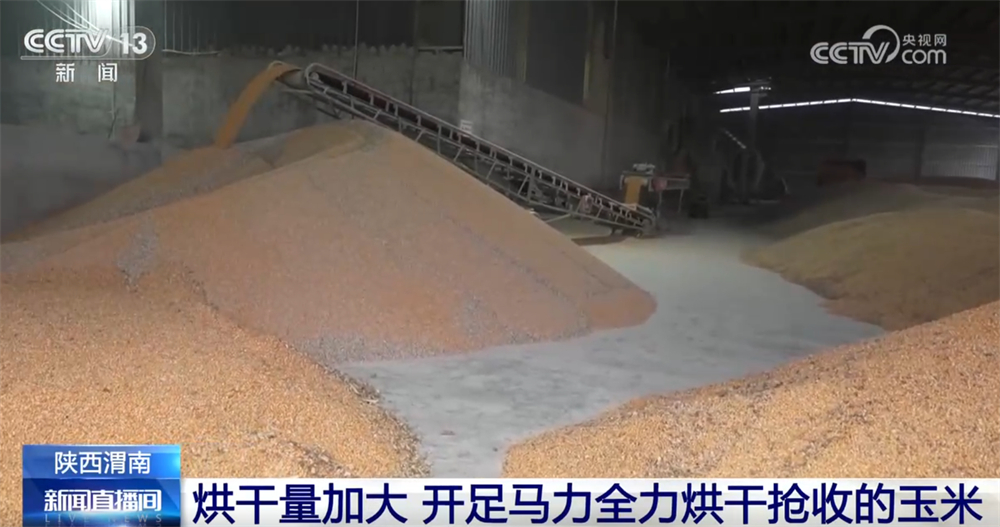
In addition to receiving larger quantities of corn than usual, rainfall has also resulted in corn with higher moisture content and more impurities, increasing the difficulty of drying.
Consequently, many drying plants have added screening equipment to improve drying efficiency. Currently, drying plants in Huayin City

